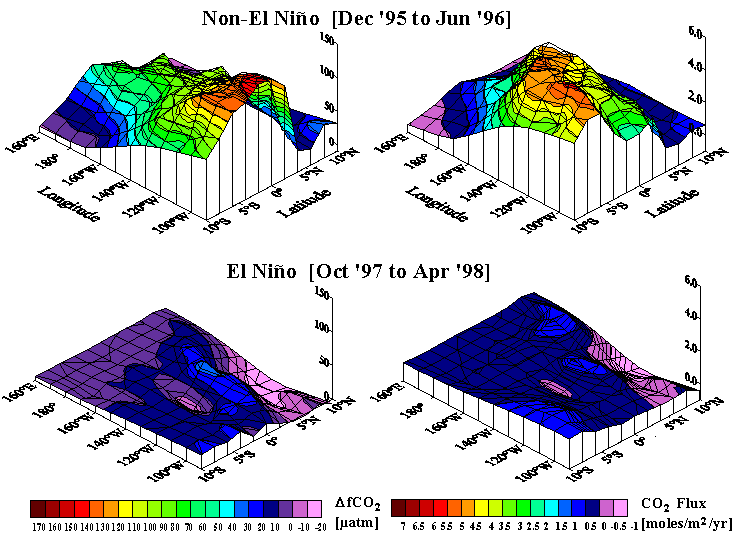|
In the above figures, DfCO2 and CO2 fluxes from the ocean to atmosphere are compared for El Niño and non-El Niño conditions. The top panel shows the DfCO2 and CO2 flux in the equatorial Pacific from December 1995 to June of 1996, when non-El Niño conditions prevailed. The bottom panel shows DfCO2 and CO2 fluxes from October 1997 to April 1998 during a period of a fully developed El Niño. The CO2 fluxes during the El Niño period are reduced by more than 100% compared with the non-El Niño condition. During 1998, this difference was sufficient to cause a measurable reduction in the growth rate of CO2 in the atmosphere as measured at NOAA Global network of atmospheric monitoring sites, including Moana Loa.
|

